Genetics Timeline
--5000 B.C. |
Early humans attempt to breed better corn. |
--1839 |
Theodore Schwann (1810-1822): German physiologist who served as an assistant to Jhonnes Muller. He extended Schleiden's cell theory to apply to animals, stating that all living things are composed of cells. |
--1866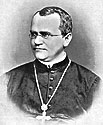 |
Gregory Johann Mendel (1822-1884): Considered to be the "father of genetics." He founded the basic laws of heredity and hypothesized the existence of factors that would determine the inheritance of traits. He was an Austrian monk who used garden pea plants (Piscum Sativum) in his experiments. He developed two laws: the law of segregation and the law of independent assortment. |
--1908 |
Thomas Hunt Morgan (1866-1945): Experimented with fruit flies (Drosophila melanogaster) and proved that genes were situated in chromosomes. Thus, he was able to prove his theory named the Chromosome Theory of Heredity, which claimed that genes were situated on chromosomes and that they could be sex-linked, inherited together if on the same chromosome, and inherited separately if located on different chromosomes. |
--1909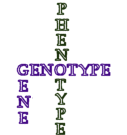 |
Wilhelm Ludvig Johannsen (1857-1927): A Danish botanist and geneticist who demonstrated that a source of genetic variation was required in a population before natural selection could affect its evolution. He was the first to introduce and clearly define the genetic terms: gene, genotype, and phenotype. |
--1944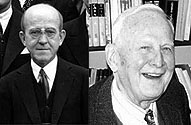 |
Oswald Avery (1877-1955) & Maclyn McCarty (1911- ): Avery, an American bacteriologist, and McCarty, an American biologist, proved together that DNA, not protein, was the hereditary material in most living organisms by experimenting with pneumococcus bacteria. |
--1951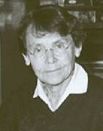 ** ** |
Barbara McClintock (1902-1992), while studying inheritance in corn, discovered that genes could randomly shift positions on chromosomes from one generation to the next. |
--1952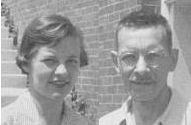 ** ** |
Alfred Hershey (1908-1997) and Martha Chase (1930-): Hershey and Chase convinced the scientific community that DNA was the genetic material by experimenting with bacteriophages (viruses that infect bacteria).They showed that bacteriophage DNA is passed on to viral progeny, but proteins are not. |
--1952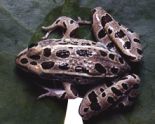 |
Robert Briggs and Thomas King create the first cloned animal when they place embryonic cells from a Northern Leopard frog into an egg from which the nucleus has been removed. |
--1953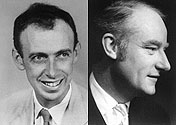 |
James Watson (1928- ) & Francis Crick (1916-): Along with the help of Maurice Wilkins and Rosalind Franklin, these two geneticists came up with a model of the DNA molecule that proved that genes determine heredity. Originally they came up with a shape resembling a spiral and named it a helix. After studying an x-ray diffraction photograph taken by Rosalind Franklin that showed the DNA pattern, it was a logical conclusion that there were two strands of DNA. These strands twisted around one another, forming the double helix. |
--1964 |
Charles Yanofsky (1925- ): A Stanford geneticist, along with several colleagues, proved that the sequence of nucleotides in DNA corresponds exactly to the sequence of amino acids in proteins. |
--1973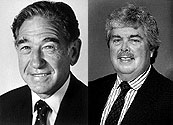 |
Stanley Cohen (1922- ) & Herbert Boyer (1936- ): Two American biochemists, along with Annie Chang and Bob Helling, teamed up to create the world's first recombinant DNA organism by inserting a gene from an African clawed toad into bacterial DNA, in which its functions appeared. The experiment set the foundation for modern biotechnology and marked the beginning of genetic engineering. |
--1976 |
Genentech (1976- ): This was the first genetic engineering company ever. Founded in San Francisco by biochemist Herbert Boyer. Two years later, scientists from Genentech succesfully cloned the gene for human insulin. |
--1983 |
Kary Mullis (1944- ): A biochemist at Cetus Corp. conceives of the so-called polymerase chain reaction, or PCR, a technique that will enable scientists to rapidly reproduce tiny snippets of DNA. |
--1984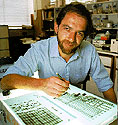 |
Alec Jeffreys (1950- ): A British geneticist develops "genetic fingerprinting," a technique used to identify individuals from their unique sequences of DNA. Many will remember its first uses in the Simpson trial. |
--1991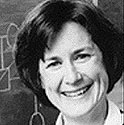 |
Mary-Claire King (1946- ): Working at the University of California in Berkeley, King finds evidence that a gene on chromosome 17 causes the inherited form of breast cancer and also increases the risk of ovarian cancer. This was done by analyzing chromosomes from women in cancer-prone families. |
--1997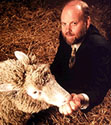 |
Ian Wilmut (1944- ): A Scottish embryologist, who was the first to clone a mammal. Dolly is a Finn Dorset sheep that was cloned from fully differentiated adult mammary cells. After Wilmut's work was published in 1997, it attracted a large amount of press as well as general interest due to the projected fears of the possibility of cloning humans. |
--1998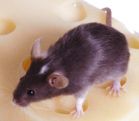 |
Scientists at the University of Hawaii produce the first mouse clones using cumulous cells. |
--2000 Photo courtesy of AFP |
G.P. Schatten and colleagues report that Tetra, a healthy female rhesus monkey, has been produced by a technique called embryo splitting. This technique allows multiple primate clones to be produced from a single embryo. |
--2001 Photo courtesy of Advanced Cell Technology |
In January of 2001, Noah the Gaur is born. Noah is the first endangered animal to be successfully cloned. |
--2001 |
In February of 2001, Celera Genomics and the International Human Genome Consortium announce that the draft sequence of the human genome is complete. |
--2001 |
In December of 2001, Carbon Copy was born at Texas A&M University. Mark Westhusin and colleagues at Texas A&M University, College Station, created Cc: by transplanting DNA from a female three-coloured (tortoiseshell or calico) cat into an egg cell whose nucleus had been removed. They then implanted this embryo into the surrogate tabby. |
| ** These photos courtesy of the Cold Spring Harbor Laboratory Archives | |